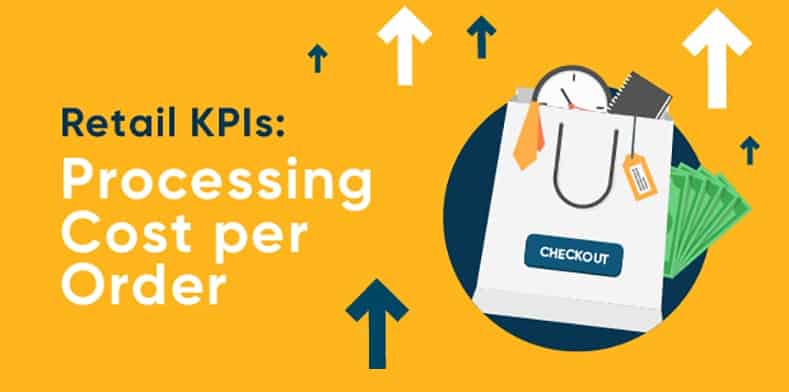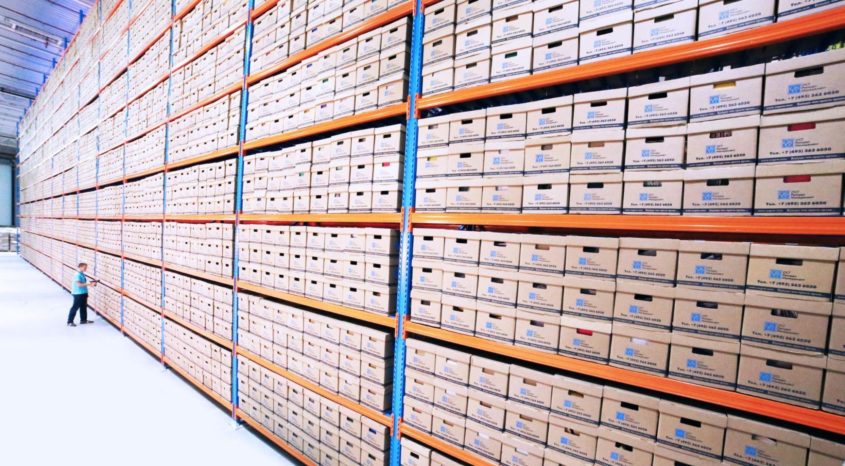Processing Cost per Order measures the efficiency of your warehousing and order processing in relation to your revenue. This Retail KPI looks at the throughput of orders as a measure, as opposed to revenue, because in the majority of situations, the value of an order doesn’t effect how long it takes to make its way through your warehouse.
In this article, I’ll introduce the concept and formula for measuring your Processing Cost per Order and some ideas on how to improve it.
Understanding your Processing Cost per Order
Processing Cost per Order = Cost of Operations / Number of orders
The Cost of Operations will naturally fluctuate from business to business, and will be a combination of fixed costs (such as warehouse rent), and variable costs that increase in relation to order volumes (such as packaging). When figuring out what your business needs to track, ensure to include only the costs that contribute to shipping orders to your customer; exclude marketing, or any later activity costs (such as bookkeeping).
Here’s an example for a typical business that’s shipped 2,100 orders in the last month:
Fixed costs
Warehouse $3,400
Warehouse salaries $9,200
Total $12,600
Per order $6.00
Variable costs
Packaging $1,100
Total $1,100
Per order $0.52
Processing Cost per Order: $6.52
This is just an average across all orders and cannot be used to determine whether a given order is going to be profitable or not.
We’ve excluded the shipping costs we pay to carriers such as FedEx, since in this example business, we pass that charge on to the customer. If you provide free shipping on all your orders, you’d need to include all carriage costs in your variable costs. If only some of your orders are free shipping, then the most accurate end result comes from including only the value of carriage on those orders. Otherwise, if you want the simplest option, exclude carriage completely.
Your Processing Cost per Order will often be traded against the Perfect Order Rate – if you choose to increase your perfect order rate through more quality checking and stronger packaging, your processing costs will go up.
In the example given above, the majority of the cost is made up from fixed expenses, which don’t vary with the number of orders you ship each month. In a quiet month, your team are going to be doing other things during the day, so you can’t allocate all their salary to the shipping operation. You may also have a team that has other roles in the business as well as shipping. If you want to track performance of just the shipping operations, measure the time you spend shipping each day and apply an hourly cost to it.
Using the previous example business:
Warehouse team salaries $9,200
Time spent packing orders 100 hours
Total paid hours per month 140 hours
Cost of packing: $9,200 * 100 / 140 = $6,571
Analyzing the result
There’s no benchmark to share here – it’s for you to check against each month to measure improvements in your operations. The point of tracking it, however, is so you can make sure the number is always going down as you fine-tune your processes.
You should find that as you ship more orders, the cost per order decreases, since only the variable costs will rise with order volume (to a point – if you are very busy you may need to employ temporary warehouse staff).
What actions can be taken to improve it?
The primary way to improve the result is to improve your warehousing operations and shipping more orders with a fixed cost. Here are some other things you can try:
- Process orders faster. Small scale improvements to your picking, packing and shipping speed won’t appear immediately in the Processing Cost per Order metric, since you’re not actually spending any less money on processing, as both warehouse and staff costs are fixed. You’d need to record the actual time spent processing orders as a separate measurement for that. If you keep improving your shipping processes, you’ll be able to scale revenue (number of orders) without needing to increase your warehouse costs as much.
- Improve your warehouse layout. Move top selling items near to the packing bench to cut down on picking times.
- If you’re not already, adopt picking into your workflow. A picking list will contain all the SKUs required for a given batch of orders, which is much easier and more time efficient to work from than single order packing notes.
- Ensure technology is on your side, and automate tasks that are safe to be automated. Ensure your carriers are integrated to your warehouse system to remove the task of logging individual shipments through the carrier’s own websites or portals.




